Somalia’s journey of hunger
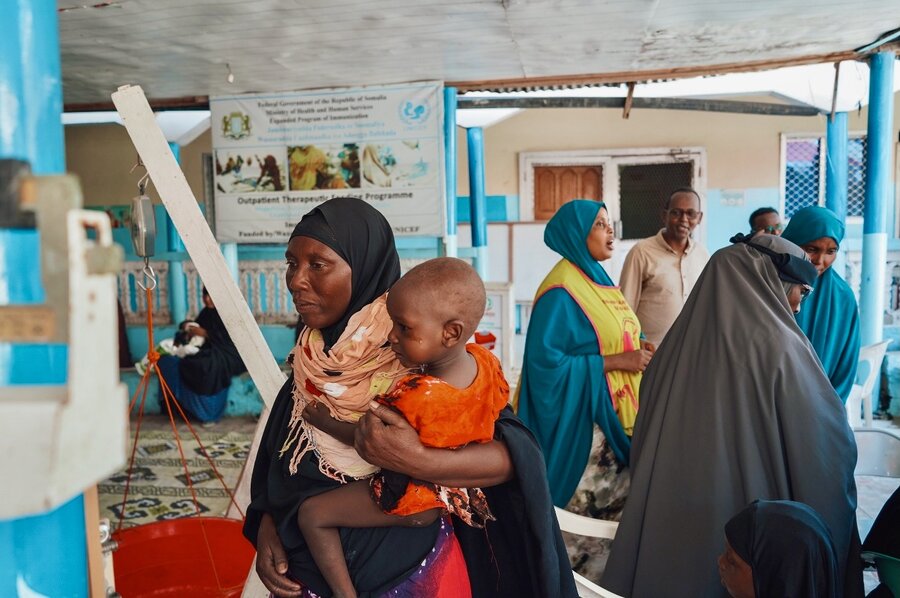
The cramped streets of Mogadishu buzz with cars, donkey-drawn carts and three-wheeled vehicles known as tuk-tuks - all competing to navigate the slippery, muddy channels carved out by unexpectedly heavy rains.
Somalia’s unpredictable weather has struck again. The rainy season, marked by a massive and deadly downpour hitting the capital in May, has destroyed homes and infrastructure.
But the upcoming dry season risks wreaking even more devastation. A raft of severe droughts that have gripped the country in recent years count among multiple factors forcing millions of Somalis like Farhia Ali to make the most difficult of choices: to leave everything behind in search of food and safety in Mogadishu and other urban areas.
“Our life here right now is a mess,” says Ali, who left her farm in Jowhar, in south-central Somalia, with her family in January. They now live in a displacement camp in the capital. “A complete mess.”
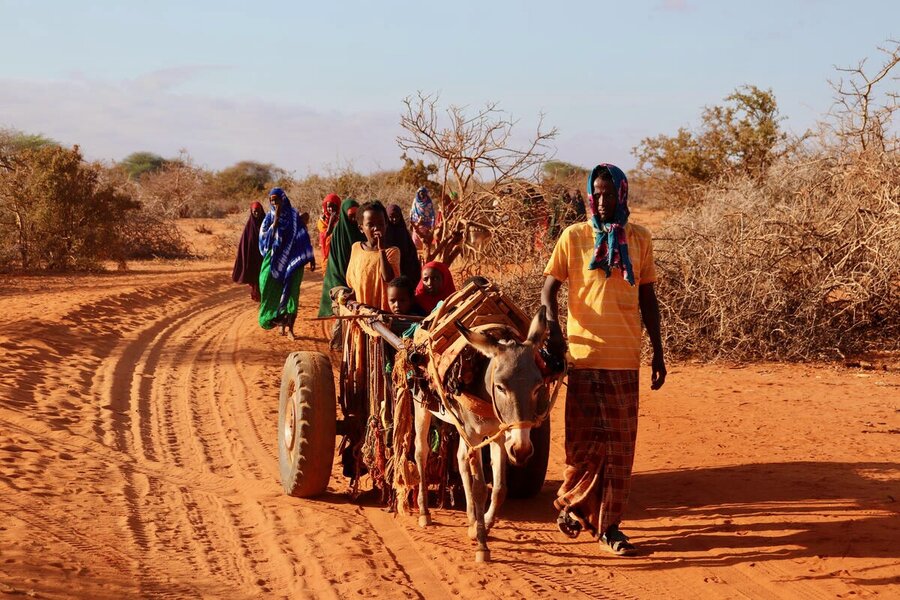
Today, Somalia is a country on the move - for reasons that go beyond its nomadic traditions. Conflict, insecurity and weather extremes have uprooted 3.9 million people and sharply driven up hunger, which is expected to worsen in the coming months.
The latest expert analysis, or Integrated Food Security Phase Classification, projects that 4.6 million people - including 1.8 million children under 5 - could face critical food insecurity by the end of June. Nearly 40 percent of them, or 1.7 million people, are displaced. Even as needs soar, the World Food Programme (WFP) has been forced to cut assistance due to lack of funds.
“We’re deeply concerned that hunger and malnutrition could persist or even get worse,” says Laksiri Nanayakkara, WFP Somalia’s head of vulnerability analysis and mapping. Many communities are still reeling, he says, from Somalia’s 2021-23 drought, the worst in 40 years. “Even people who weren’t facing any hunger could now be at risk,” Nanayakkara adds.
Failed rains, failed harvests
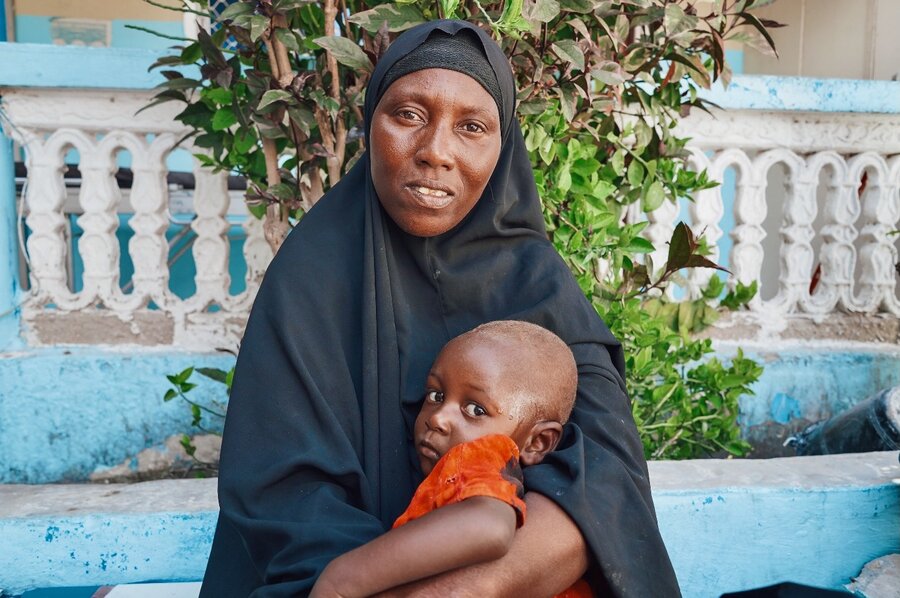
As she waits at a Mogadishu health centre to get nutrition support for her 16-month-old daughter Ruqiya, Ali describes her family’s departure from their ancestral home - tracing one of the many paths of displacement criss-crossing the country: paths travelled- mostly on foot - under a burning sun, with little food and water. Journeys marked by security checkpoints, sleeping out in the open, and crossing ways with other families who struggle to reach urban displacement settlements.
Ali and her family once owned a prosperous farm, handed down through multiple generations. Her husband shared a piece of fertile land with his extended family in a village near the town of Jowhar. It provided rich harvests of sorghum, maize and beans. During a good season, the family sold half their produce at the market, saving the rest to eat.
“You can’t survive in that area unless you have a farm,” Farhia says, showing her work-calloused hands.
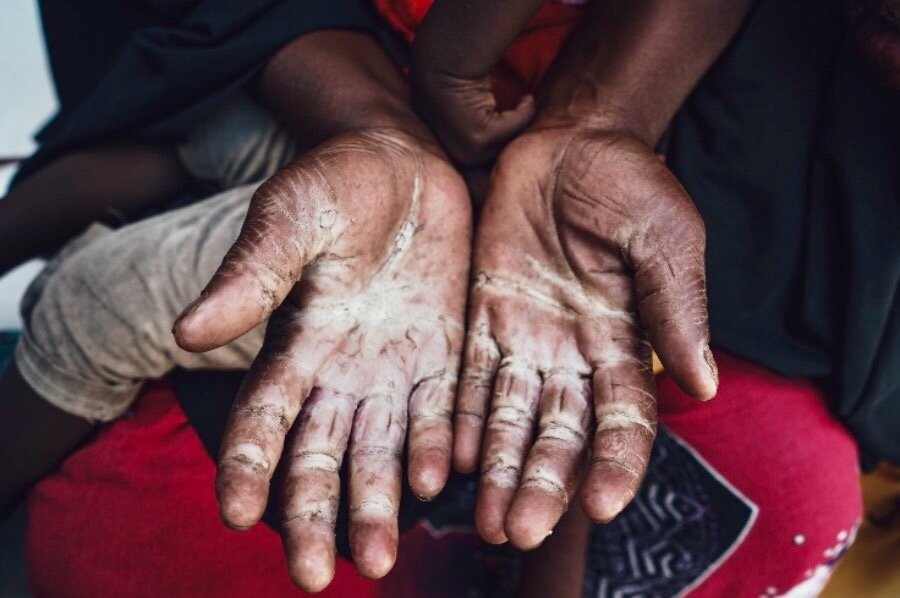
“When there’s no drought, the food might be enough for a longer period. But last year, the production was terrible.”
When crippling droughts delivered two failed harvests in 2024, the couple considered leaving. As their crops dwindled, so did their options, pushing them to seek humanitarian assistance for the first time - like other farmers and herders, hard-hit by dry weather and erratic rainfall. Indeed, drought, conflict and floods were projected to uproot 230,000 additional people by the end of June - with the Mogadishu area expected to receive the highest numbers of those displaced.
“Farhia (Ali) and her family once had a stable life, with access to a variety of nutritious foods from their farm,” says Faisal Ali, a nutrition programme associate for WFP Somalia. “For farmers like them, one failed rainy season is devastating. Can you imagine what happens after several in a row?”
In January, Ali and her husband began the 100 km journey to Mogadishu with their four children, aged 16 months to 13 years, taking two goats along with them. Between long stretches of walking and occasional lifts, the trip took three days, including nights sleeping next to the road.
“There’s fear on the road when you are travelling,” Ali recalls. “But we weren’t able to walk fast because we were taking care of the children.”
Stretched thin
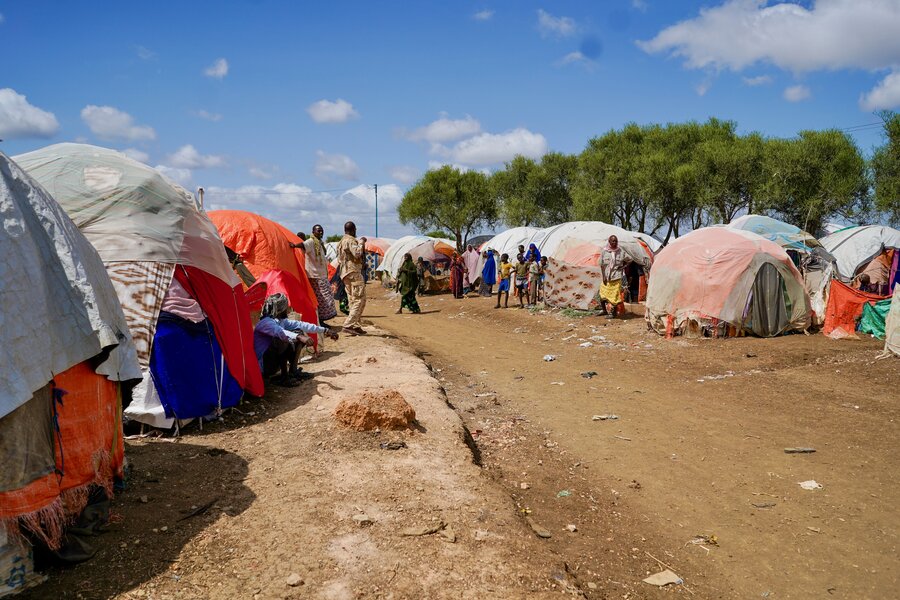
In Mogadishu, Ali’s family found refuge at the Dayaab displacement settlement, in the northern outskirts of the city. They have since lost one of their children. Today, they survive on the US$2-US$3 daily her husband makes as a porter - enough for one meal per day.
When the rainstorm hit in May, Ali watched water pour into the family’s torn orange plastic tent, washing away their few personal belongings. “It’s extremely tough,” Ali says of her current life, adding, “I couldn’t even put my children to sleep that night.”
Somali families like Ali's traditionally had few safety nets to depend on. They have even fewer today. The funding crunch has forced WFP to deeply slash the number of people receiving food assistance, from 2.2 million people last year to just 820,000 today - or less than 18 percent of those facing severe food insecurity.
Other humanitarian agencies are also stretched thin. “Unfortunately, funding cuts have had a huge impact on our ability to deliver life-saving humanitarian assistance, displacement management and resilience building,” says Manuel Marques Pereira, chief of mission for the International Organization for Migration in Somalia. Across the 900 camps it supports, he adds, the International Organization for Migration is seeing “a worsening of conditions, a higher risk of collapse of basic services and social fabric”.

At the Mogadishu health clinic, little Ruqiya is diagnosed with malnutrition. She receives WFP’s specialized nutrient-packed foods to treat it. Cradling Ruqiya in her arms, and holding the hand of another daughter who cries out for food, Ali begins the muddy walk back to their new, precarious home.
“I hope we can go back to the farm,” she says, adding, “inshallah (God-willing).”
WFP’s food and nutritional assistance to displaced people in Somalia is supported by the African Development Bank, Austria, Canada, Denmark, the European Union, the Federal Government of Somalia, France, Germany, the Global Agriculture and Food Security Programme (GAFSP), Japan, the Republic of Korea, Saudi Arabia, Spain, Sweden, CERF, the United Kingdom and the United States of America.
